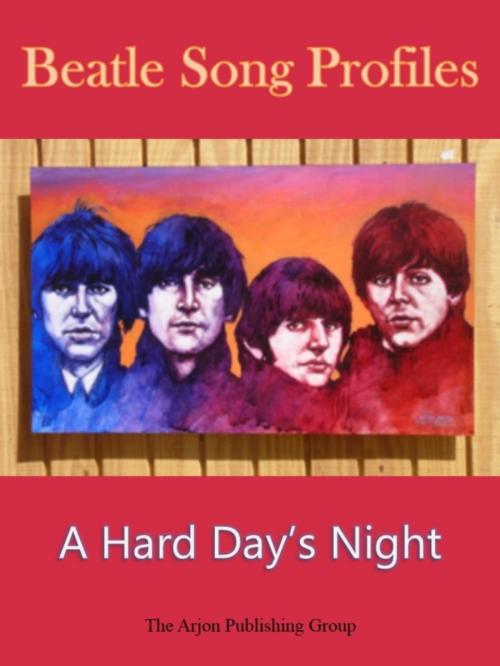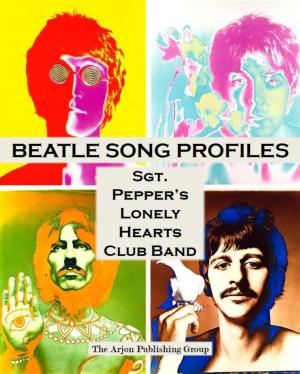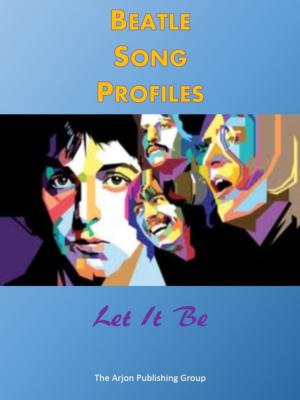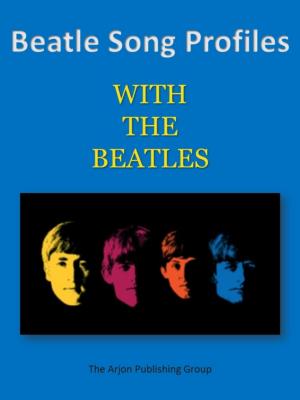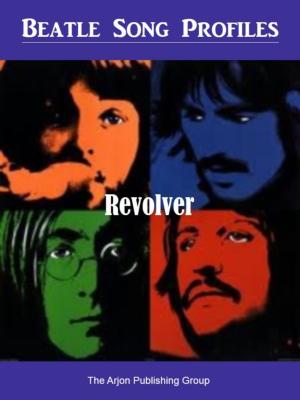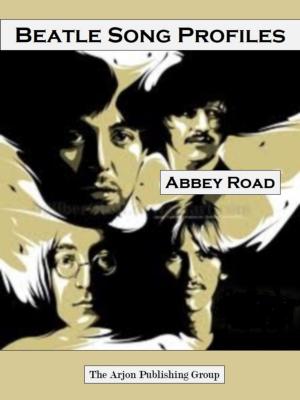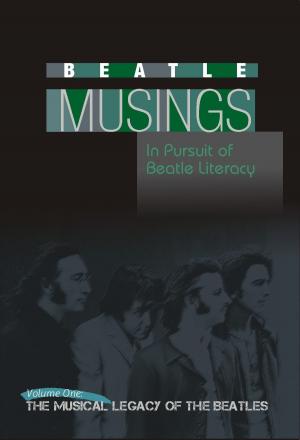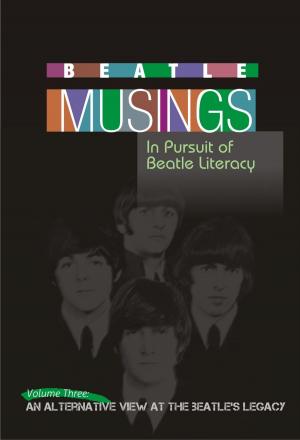Beatle Song Profiles: A Hard Day's Night
Nonfiction, Entertainment, Music, Pop & Rock, Popular, Music Styles, Rock| Author: | Joel Benjamin | ISBN: | 9789657570012 |
| Publisher: | Arjon Publishing | Publication: | August 2, 2012 |
| Imprint: | Language: | English |
| Author: | Joel Benjamin |
| ISBN: | 9789657570012 |
| Publisher: | Arjon Publishing |
| Publication: | August 2, 2012 |
| Imprint: | |
| Language: | English |
Each of the 13 songs from A Hard Day’s Night are “profiled” in this volume of Beatle Song Profiles.
Beatle Song Profiles are concise commentaries on every Beatle song. The song profiles describe the song’s origins and inspiration, what The Beatles themselves said about it, what was unique about the music and/or production of the arrangement or vocals, and the deeper meaning of the lyrics.
Beatle Song Profiles is a unique educational tool to enable readers to learn about every song on all 12 albums The Beatles recorded.
Sample song profile from A Hard Day’s Night
A Hard Day’s Night
The official story is that “A Hard Day’s Night” was written ten hours after the producer for the movie had asked for it. It took only three hours to record.
Ringo said:
“We went to do a job, and we’d worked all day and we happened to work all night. I came up still thinking it was day I suppose, and I said, ‘It’s been a hard day...’ and I looked around and saw it was dark so I said, ‘...night!’ So we came to A Hard Day’s Night.”
Joey Ramone of The Ramones said:
“The opening chord of the song was like an amazing wake-up call.”
With that chord of this song the Beatles had raised the bar for all pop songwriting. The chord is a powerful attention-grabber- a G7, that is considered unique in that it is neither major nor minor- but hangs in the air with disturbing inevitability. The pause after the opening chord is the first example of how suspense and a sense of rising expectation are created by a change of pace. A large part of this specific effect is the surprise factor, especially as you experience it at the beginning of the film or the album.
George Martin remembers:
“In those days, the beginnings and endings of songs were things I tended to organize. We needed something striking, to be a sudden jerk into the song. In the fade out I stressed to them the importance of making the song fit- not actually finishing it but dangling on so that you’re into the next mood.”
Although Lennon had composed the track and was the lead singer- he needed McCartney’s help because he couldn’t reach all the notes.
A key part of the song is the wall of sound effect is partly the result of the drumming style being kept unvaried throughout. Ringo provides wall-to-wall thumping on drums and cymbals instead of the usual drum fills and texture changes. This monolithic approach to percussion adds to the steam-rolling thrust of the track.
It’s been said that George Harrison’s solos in the song became the founding sound of folk rock. It’s melodically unconventional- yet very bluesy at the same time. This was the song where the characteristic sound of George’s twelve-string guitar would firmly establish itself. The appearance in the opening and closing chords, as well as the manner in which it is doubled with electric piano in the solo section are among the more instantaneously recognizable sound bites in all of popular music. Introduced by a raspy shriek of inhibition from Harrison’s guitar solo affords the song an elegant interlude amidst all of the number’s energy and desire.
A Hard Day’s Night is a composition about Love, identified with Home. There is a division between innocence (the ecstasy of being “held tight”) and experience (things, making money, the tedium of work, suggested by the long repeated notes in the tune’s first phrase). It sees innocence and experience as interdependent; the freedom couldn’t be so lovely where it not for the tedium.
Each of the 13 songs from A Hard Day’s Night are “profiled” in this volume of Beatle Song Profiles.
Beatle Song Profiles are concise commentaries on every Beatle song. The song profiles describe the song’s origins and inspiration, what The Beatles themselves said about it, what was unique about the music and/or production of the arrangement or vocals, and the deeper meaning of the lyrics.
Beatle Song Profiles is a unique educational tool to enable readers to learn about every song on all 12 albums The Beatles recorded.
Sample song profile from A Hard Day’s Night
A Hard Day’s Night
The official story is that “A Hard Day’s Night” was written ten hours after the producer for the movie had asked for it. It took only three hours to record.
Ringo said:
“We went to do a job, and we’d worked all day and we happened to work all night. I came up still thinking it was day I suppose, and I said, ‘It’s been a hard day...’ and I looked around and saw it was dark so I said, ‘...night!’ So we came to A Hard Day’s Night.”
Joey Ramone of The Ramones said:
“The opening chord of the song was like an amazing wake-up call.”
With that chord of this song the Beatles had raised the bar for all pop songwriting. The chord is a powerful attention-grabber- a G7, that is considered unique in that it is neither major nor minor- but hangs in the air with disturbing inevitability. The pause after the opening chord is the first example of how suspense and a sense of rising expectation are created by a change of pace. A large part of this specific effect is the surprise factor, especially as you experience it at the beginning of the film or the album.
George Martin remembers:
“In those days, the beginnings and endings of songs were things I tended to organize. We needed something striking, to be a sudden jerk into the song. In the fade out I stressed to them the importance of making the song fit- not actually finishing it but dangling on so that you’re into the next mood.”
Although Lennon had composed the track and was the lead singer- he needed McCartney’s help because he couldn’t reach all the notes.
A key part of the song is the wall of sound effect is partly the result of the drumming style being kept unvaried throughout. Ringo provides wall-to-wall thumping on drums and cymbals instead of the usual drum fills and texture changes. This monolithic approach to percussion adds to the steam-rolling thrust of the track.
It’s been said that George Harrison’s solos in the song became the founding sound of folk rock. It’s melodically unconventional- yet very bluesy at the same time. This was the song where the characteristic sound of George’s twelve-string guitar would firmly establish itself. The appearance in the opening and closing chords, as well as the manner in which it is doubled with electric piano in the solo section are among the more instantaneously recognizable sound bites in all of popular music. Introduced by a raspy shriek of inhibition from Harrison’s guitar solo affords the song an elegant interlude amidst all of the number’s energy and desire.
A Hard Day’s Night is a composition about Love, identified with Home. There is a division between innocence (the ecstasy of being “held tight”) and experience (things, making money, the tedium of work, suggested by the long repeated notes in the tune’s first phrase). It sees innocence and experience as interdependent; the freedom couldn’t be so lovely where it not for the tedium.
